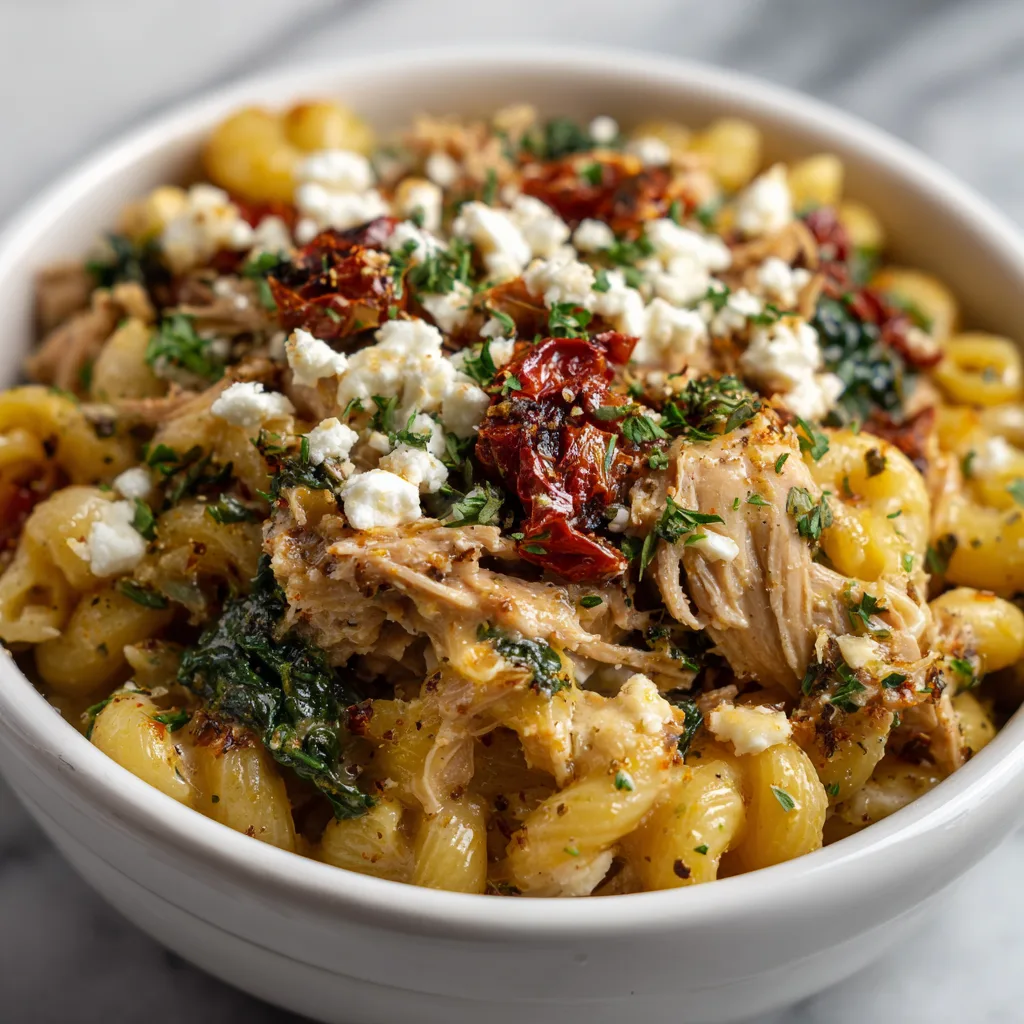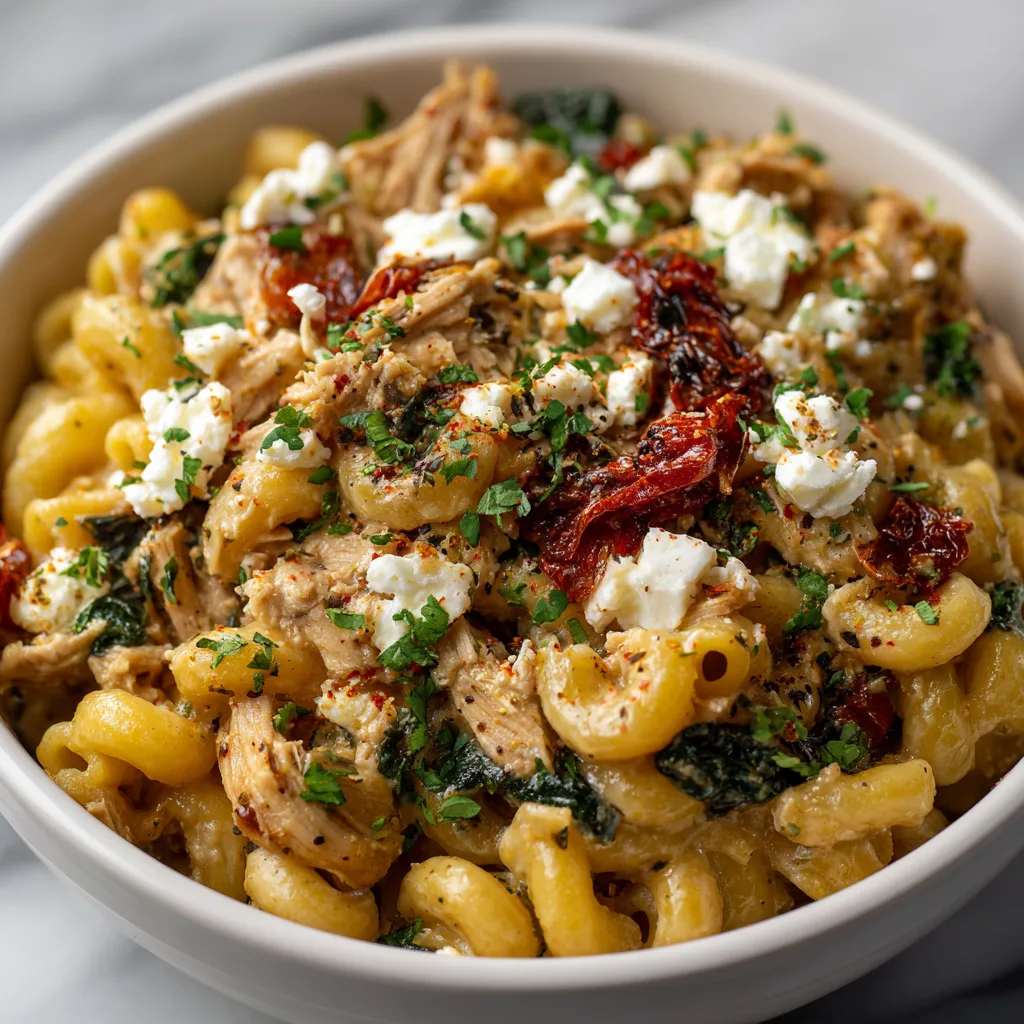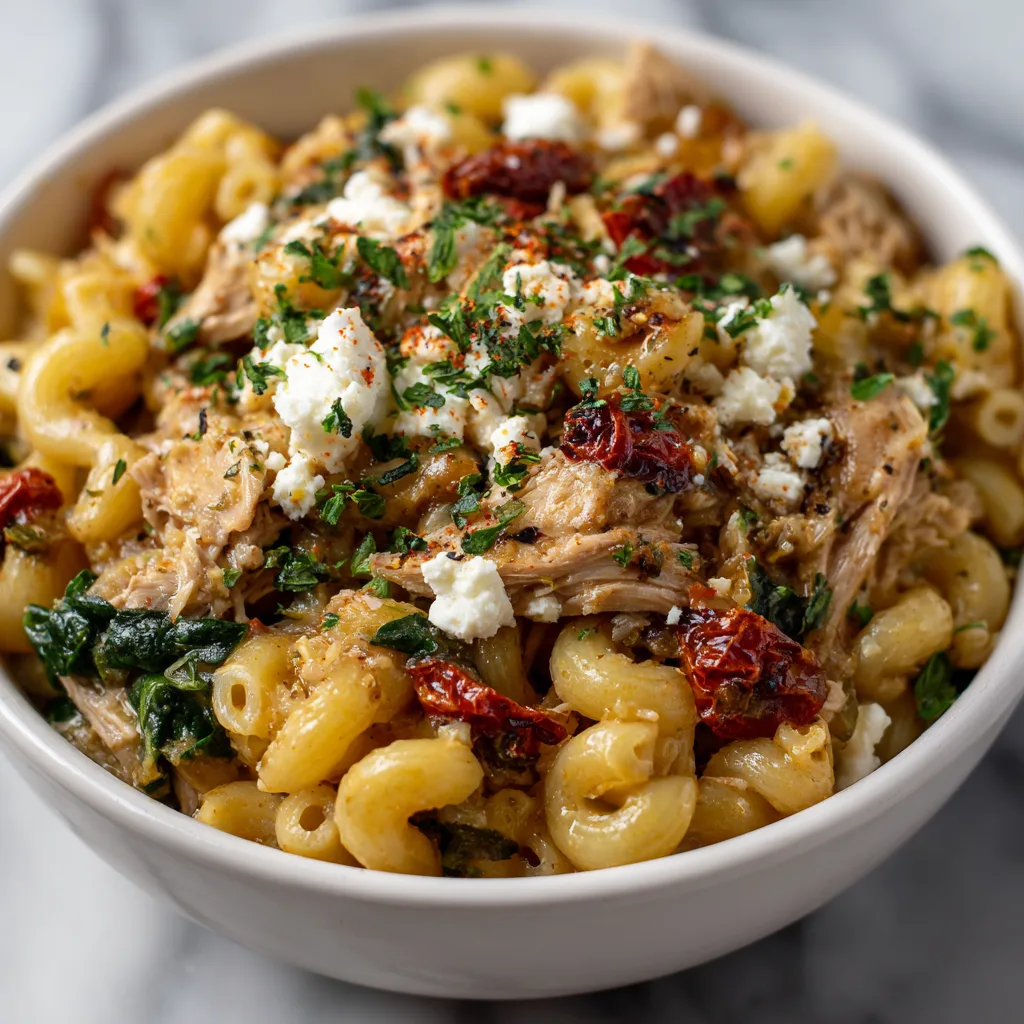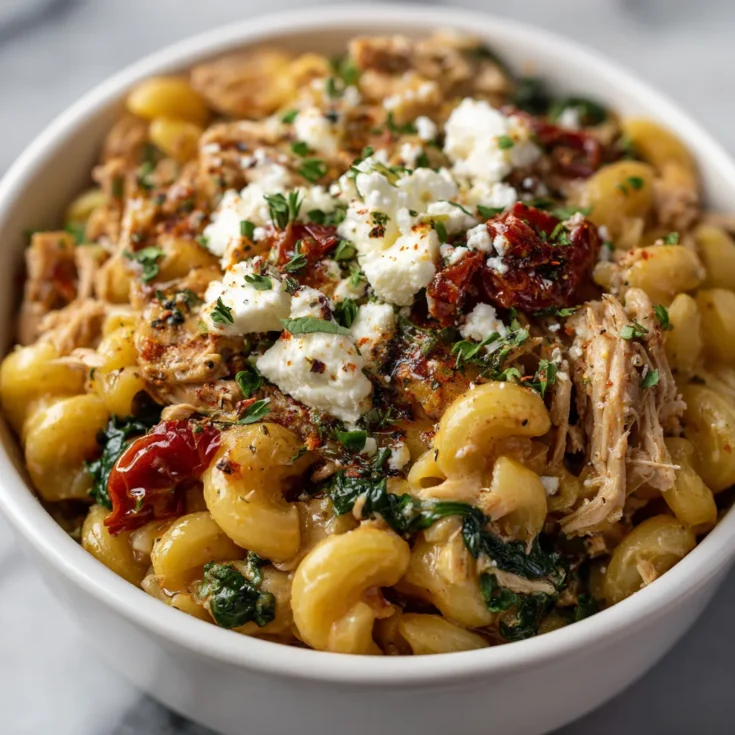For One Mediterranean Tuna Casserole – A Perfect Solo Meal
Single-serving meals have grown in popularity as people seek convenient, nutritious options that suit their busy lives. Cooking just for yourself can be enjoyable and rewarding when the recipe is simple, flavorful, and wholesome. A Mediterranean tuna casserole for one fits this need perfectly.
This casserole brings together the best of Mediterranean diet principles: fresh vegetables, lean protein from tuna, heart-healthy olive oil, and aromatic herbs. Each ingredient combines to create a dish rich in nutrients that support overall health. It’s a balanced meal that fuels your body without excess calories or complicated preparation.
The flavor profile of this casserole is fresh and savory. Bright tomatoes, briny olives, and fragrant herbs blend seamlessly with tender pasta and flaky tuna. This harmony delivers satisfying textures and tastes that keep every bite interesting. It’s a comforting yet light dish that feels indulgent without being heavy.
This article will guide you through making a delicious Mediterranean tuna casserole designed for one. You’ll find step-by-step instructions, ingredient insights, and tips to customize the dish to your liking. Additionally, we’ll cover the nutritional benefits and offer variations that cater to different dietary needs. Whether you want a quick lunch or a wholesome dinner, this recipe delivers a perfect solo meal that’s both tasty and good for you.
Key Ingredients in a Mediterranean Tuna Casserole for One
Creating a flavorful Mediterranean tuna casserole starts with fresh, quality ingredients. Tuna serves as the protein powerhouse, providing a rich source of lean protein and essential omega-3 fatty acids. Typically, canned tuna packed in water or olive oil works well, but fresh tuna can be an excellent alternative for a more gourmet touch.
Pasta acts as the comforting base, often using short varieties like penne or fusilli that hold sauce well. For those avoiding gluten, gluten-free pasta options like brown rice or chickpea pasta work perfectly without sacrificing texture.
Olives bring a salty, tangy punch, enhancing the savory depth of the dish. Tomatoes, whether fresh or canned, add brightness and a slight acidity, balancing the richness of the tuna and cheese. Fresh herbs such as oregano, basil, and parsley inject vibrant aromas and flavors, true to Mediterranean cooking.
Cheese, often feta or mozzarella, adds creaminess and a mild tang. It melts beautifully in the oven, binding the casserole’s ingredients together while providing a pleasing contrast in texture. Additional ingredients like garlic, onions, and a drizzle of olive oil amplify the dish’s aroma and enhance its heart-healthy fats.
This combination of ingredients creates a dynamic flavor profile with varied textures — tender pasta, flaky tuna, juicy tomatoes, and creamy cheese. Substitutions are easy: for dairy-free versions, omit cheese or use plant-based alternatives; for lower sodium, opt for no-salt-added canned tuna and rinse olives before use.
Nutritional Profile of Mediterranean Tuna Casserole
This single-serving casserole offers a balanced mix of macronutrients vital for energy and muscle health. Protein mainly comes from tuna and cheese, providing approximately 25-30 grams per serving. Carbohydrates from pasta fuel your body and brain, offering around 40-45 grams depending on the pasta choice. Healthy fats primarily derive from olive oil, olives, and tuna, with about 10-15 grams per portion.
Micronutrient-wise, the casserole shines with omega-3 fatty acids from tuna, known for supporting heart and brain health. The tomatoes and herbs contribute antioxidants like lycopene and flavonoids, which help combat inflammation and protect cells. Calcium from cheese supports bone strength, while vitamins like vitamin C and potassium in the vegetables aid immune function and electrolyte balance.
The Mediterranean ingredients collectively promote heart health, reduce inflammation, and support overall wellness. Olive oil’s monounsaturated fats help lower bad cholesterol, while the fiber in vegetables aids digestion.
On average, this meal contains around 450-500 calories per serving, making it a satisfying yet moderate option for solo diners. Its nutrient density makes it suitable for those seeking a balanced, flavorful, and health-conscious meal without excess calories.
By choosing fresh, wholesome ingredients and controlling portion size, this casserole aligns with both nutritional goals and culinary enjoyment.
How to Make Mediterranean Tuna Casserole for One
Preparing the Ingredients
Begin by gathering fresh vegetables. Chop ripe tomatoes into bite-sized pieces, ensuring they are juicy but not overly watery. Finely mince fresh herbs like parsley, oregano, and basil to release their fragrant oils. These herbs will brighten the dish and provide authentic Mediterranean flavor.
Next, cook your pasta. Use about ½ cup of dry pasta—penne, fusilli, or another short shape works well. Boil the pasta in salted water until it reaches al dente, meaning it is tender but still slightly firm to the bite. This prevents mushiness after baking. Once cooked, drain the pasta thoroughly to avoid excess moisture in the casserole.
Open your can of tuna and drain it well. Flake the tuna gently with a fork to break it into bite-sized chunks. If using fresh tuna, cook it lightly and flake it similarly. Proper draining and flaking ensure even distribution throughout the casserole and prevent sogginess.
Assembling the Casserole
In a mixing bowl, combine the drained pasta with flaked tuna, chopped tomatoes, olives, and minced herbs. Add a drizzle of olive oil and season with salt, pepper, and a pinch of crushed red pepper flakes if you prefer a subtle kick. Toss everything gently to blend the flavors without breaking the tuna too much.
Next, fold in cheese. Crumbled feta adds a tangy creaminess, while shredded mozzarella melts into gooey richness. You can also mix a little grated parmesan for a savory depth. Layering is simple—mixing all ingredients in one bowl before transferring to your baking dish keeps flavors balanced.
For a polished casserole, sprinkle extra cheese and herbs on top. This topping creates a golden, appetizing crust during baking. Adding a few sliced olives or cherry tomato halves on top provides a colorful finish.
Baking Instructions
Preheat your oven to 375°F (190°C). Transfer the assembled casserole into a small, oven-safe dish sized for a single serving.
Bake uncovered for about 20-25 minutes. The casserole is ready when the cheese melts fully and develops golden spots. You should also see bubbling edges indicating the ingredients are heated through.
To check doneness, insert a fork into the center; it should feel hot and the casserole should hold its shape. Avoid overbaking, which can dry out the tuna and pasta.
Optional garnishes include fresh basil leaves or a drizzle of extra virgin olive oil after baking. These touches enhance aroma and add a fresh finish.
Tips for Perfecting Your Tuna Casserole
Prevent dryness by monitoring baking time carefully and ensuring the pasta is not overcooked before baking. Slightly undercooked pasta allows the casserole to finish cooking perfectly in the oven.
Use fresh herbs whenever possible. They offer brighter flavors and livelier aromas than dried herbs. If dried herbs are all you have, add them early in the mixing stage to allow rehydration and better flavor release.
Adjust salt and spices gradually. Tuna and olives can be salty, so taste before adding extra salt. Adding spices like black pepper, paprika, or a dash of chili flakes can personalize heat levels.
For leftovers, store the casserole in an airtight container in the refrigerator. Consume within 2-3 days for best taste and safety. Reheat gently in a microwave or oven, covering the dish to retain moisture. Add a splash of water or olive oil if it seems dry during reheating.
By following these steps and tips, you’ll create a balanced, flavorful Mediterranean tuna casserole that suits your solo dining perfectly.
Creative Variations on the Classic Mediterranean Tuna Casserole
Elevate your Mediterranean tuna casserole by adding extra vegetables. Fresh spinach wilts nicely into the warm dish, boosting its nutrient content and adding vibrant color. Thinly sliced zucchini offers a mild sweetness and tender texture that complements the tuna. Artichoke hearts bring a unique, slightly tangy flavor that deepens the Mediterranean character.
Experiment with different cheeses to change the flavor profile. Crumbled feta provides a salty, tangy bite typical of Greek cuisine. Mozzarella melts smoothly, lending a creamy texture without overpowering other ingredients. Parmesan adds a sharp, savory note and a golden crust when sprinkled on top before baking.
For dairy-free or vegan adaptations, swap tuna for plant-based proteins like chickpeas or crumbled tofu. These options maintain protein content while appealing to various dietary needs. Replace cheese with vegan alternatives or nutritional yeast to retain flavor without dairy.
Try alternative bases beyond traditional pasta. Quinoa delivers a nutty flavor and boosts protein and fiber. Couscous offers a quick-cooking grain that soaks up the casserole’s sauce beautifully. These substitutes diversify textures and cater to gluten-free or grain-free diets.
Serving Ideas and Pairings
Pair your casserole with fresh, light side dishes to balance the meal. A crisp Greek salad with cucumbers, tomatoes, and olives enhances the Mediterranean theme and adds refreshing crunch. Roasted vegetables like bell peppers, eggplant, or asparagus bring warmth and depth.
Since you prefer to avoid alcoholic beverages, try pairing your casserole with sparkling water infused with lemon or cucumber slices. Herbal iced teas or freshly squeezed citrus juices also complement the fresh flavors nicely.
Presentation matters, especially for solo servings. Serve the casserole in a small, attractive baking dish or individual ramekin. Garnish with a sprinkle of fresh herbs and a wedge of lemon for color and brightness. A simple side plate for your salad and a neatly folded napkin create a satisfying dining experience even when cooking for one.





